Blood shortages and inventory problems occur all too often. Nancy Dunbar says we need a few simple adjustments to “the rules” about O-negative RBCs, AB plasma, and apheresis platelets.
NOTE: Continuing Education credit for this episode has expired. See below for details.

Dr. Nancy Dunbar
Declining Donations
The story is not that simple. In the face of the overall decline in blood product usage, there has been a parallel decline in blood donations. The reasons for this change are unclear. Most blood collectors are NOT saying, “Hey, we don’t need as much as before, so let’s try to collect less!” Rather, blood centers are scrambling to even keep up with the decreased demand.
When Less is More
In addition to declining collections, the proportion of “special” blood products requested by hospitals has actually increased. Blood centers see this with O-negative red cell and AB plasma orders especially. For example, a hospital may ask for 10% fewer red blood cells than in previous years (good news), but the proportion of O-negative RBCs might be increased, say to 12% of the total RBC order (not so good news). Unfortunately, the percentage of U.S. O-negative blood donors hovers at just over 8%. This “disconnect” between supply and demand sets us up for frequent, recurring “shortages” of those products in everyday practice.
So, What Can We Do?
Nancy Dunbar is medical director of a large, very busy academic transfusion service that happens to be quite rural in location. She has learned to be creative with managing her inventory by necessity. Nancy is here to share some tips on how transfusion services everywhere can make simple adjustments to “the rules” and significantly increase the efficiency with which we use O-negative RBCs, AB plasma, and apheresis platelets.

Dr. Nancy Dunbar
Declining Donations
The story is not that simple. In the face of the overall decline in blood product usage, there has been a parallel decline in blood donations. The reasons for this change are unclear. Most blood collectors are NOT saying, “Hey, we don’t need as much as before, so let’s try to collect less!” Rather, blood centers are scrambling to even keep up with the decreased demand.
When Less is More
In addition to declining collections, the proportion of “special” blood products requested by hospitals has actually increased. Blood centers see this with O-negative red cell and AB plasma orders especially. For example, a hospital may ask for 10% fewer red blood cells than in previous years (good news), but the proportion of O-negative RBCs might be increased, say to 12% of the total RBC order (not so good news). Unfortunately, the percentage of U.S. O-negative blood donors hovers at just over 8%. This “disconnect” between supply and demand sets us up for frequent, recurring “shortages” of those products in everyday practice.
So, What Can We Do?
Nancy Dunbar is medical director of a large, very busy academic transfusion service that happens to be quite rural in location. She has learned to be creative with managing her inventory by necessity. Nancy is here to share some tips on how transfusion services everywhere can make simple adjustments to “the rules” and significantly increase the efficiency with which we use O-negative RBCs, AB plasma, and apheresis platelets.
About My Guest:
Nancy Dunbar, MD, is Medical Director of the Blood Bank at Dartmouth-Hitchcock Medical Center in Lebanon, NH. She is an Associate Professor of Pathology and Laboratory Medicine at Dartmouth, and she is the associate Program Director for both the Pathology Residency Program and the Transfusion Medicine Fellowship.
Dr. Dunbar is a very active researcher, and has received numerous honors for her scholarly activities. She has published over 50 original articles and reviews in Transfusion Medicine journals, and has authored several chapters in standard textbooks (including the AABB Technical Manual). She teaches regularly to learners at Dartmouth and numerous other facilities.
Continuing Education Expired
This podcast episode offered continuing education credit for two years from its release date, but is no longer eligible for such credit.
To find Blood Bank Guy Essentials Podcast episodes with active continuing education opportunities, Click here or visit Transfusion News Continuing Education on Wiley Health Learning.
DISCLAIMER: The opinions expressed on this episode are those of my guest and I alone, and do not reflect those of the organizations with which either of us is affiliated. Dr. Dunbar has received honoraria from Verax Biomedical for service on their medical advisory board. Dr. Chaffin has no relevant financial disclosures.
Further Reading:
- O negative Red Blood Cell Use:
- Zeller MP et al. An international investigation into O red blood cell unit administration in hospitals: the GRoup O Utilization Patterns (GROUP) study. Transfusion 2017;57;2329–2337.
- Dunbar NM et al. O– product transfusion, inventory management, and utilization during shortage: the OPTIMUS study. Transfusion 2018;58:1348-1355.
- Group A Plasma Use:
- Dunbar NM et al. A possible new paradigm? A survey-based assessment of the use of thawed group A plasma for trauma resuscitation in the United States. Transfusion 2016;56;125–129.
- Dunbar NM, Yazer MH, et al. Safety of the use of group A plasma in trauma: the STAT study. Transfusion 2016;56;125–129.
- Platelet Use Strategies:
- Dunbar NM et al. Easier said than done: ABO compatibility and D matching in apheresis platelet transfusions. Transfusion 2015;55;1882–1888.
- Dunbar NM et al. ABO incompatible platelets: risks versus benefit. Curr Opin Hematol 2012;19:475–479.
- Lozano M et al. Practices associated with ABO-incompatible platelet transfusions: a BEST Collaborative international survey. Transfusion 2010;50:1743-1748.
- Ruby KN et al. Bacterial screening of apheresis platelets with a rapid test: a 113‐month single center experience. Transfusion 2018;58:1665-1669.
- Counter-arguments Against ABO Incompatible Platelets:
- Blumberg N et al. ABO matching of platelet transfusions – “Start Making Sense.” Blood Transfus 2015;13:347-50.
- Henrichs KF et al. Providing ABO-identical platelets and cryoprecipitate to (almost) all patients: approach, logistics, and associated decreases in transfusion reaction and red blood cell alloimmunization incidence. Transfusion 2012;52:635-640.
- One of my Favorite Articles on Blood Supply & Demand:
Music Credit
Music for this episode includes “Cuando te invade el temor” and “Reflejo,” both by Mar Virtual via the Free Music Archive. Click the image below for permissions and license details.




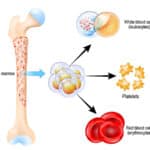

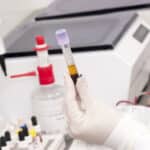



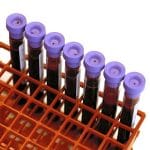

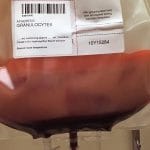
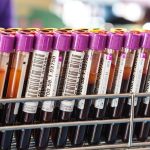
Thanks for providing the counter-argument to ABO doesn’t really matter all that much. Even so-called group O “universal donor” red cells on very rare occasions will cause severe morbidity or even mortality, so we are not doing our best for patients when we transfuse incompatible plasma or antigen. ABO mismatched platelets actually increase bleeding in our observational data, rather than mitigate it. There literally are no substantive data refuting these points. We avoid transfusing ABO mismatched antigen or antibody by plasma reducing (in our case by washing) group O components when ABO identical aren’t available, if time permits. Admittedly, this does not work for group AB massive transfusions. But it is incredibly easy for the 85% of patients who are group O or A. We are happy to host people who would like to emulate these practices and would like to visit.
We get it that we are challenging 75 years or so of conventional wisdom, but we believe the data are all in the direction of “our current practices cause morbidity and mortality” and can be tweaked at minimal cost with different approaches.
For a current discussion of the issue we have provided this review:
Is It Time to Reconsider the Concepts of “Universal Donor” and “ABO Compatible” Transfusions?
Refaai MA, Cahill C, Masel D, Schmidt AE, Heal JM, Kirkley SA, Blumberg N.
Anesth Analg. 2018 Jun;126(6):2135-2138. doi: 10.1213/ANE.0000000000002600. No abstract available.
PMID: 29099432
I appreciate your thoughtful comment, Neil. Nancy and I tried to make sure and include your perspective in this episode. Thank you also for the more recent reference.
-Joe
Joe:
This may be a basic question. In the STAT study that was discussed, there was no mention regarding Rh incompatibility. I might have thought that giving plasma from an Rh negative donor to an Rh positive recipient might cause problems. As that was not mentioned I’m guessing this must not be clinically important?
Thank you!
We generally do not worry about Rh with frozen plasma products, Bruce. While there are rare reports of D-negative patients forming anti-D following receipt of D-positive plasma, those events are fleetingly rare. It is thought that the few residual RBCs in a plasma unit are destroyed by the freeze-thaw cycle, and so there is little reason to be concerned about exposure to the D antigen for a D-negative recipient.
-Joe
I wasn’t thinking about the recipient becoming alloimmunized. Rather I was thinking an Rh negative donor could have anti-D antibodies that could react with the D antigen on the recipients red cells. Thank you!
Ah, I see what you are saying. That’s not a problem, since every blood donor is tested for antibodies, and we would not transfuse a unit of plasma containing anti-D, ever.
-Joe
Not long ago, I read from somewhere that researcher had been able to knock out antigens from rbc. Can they knock out the D antigen from the O pos units?
Also read about a solution some researchers had been testing to replace plasma in platelets. Are we there yet? Given the ABO expressions on platelets are weaker, can we some day be using universal platelets, without worrying about titers?
So far, RBCs with antigens “stripped” have not proved stable enough for clinical use. Platelet Additive Solutions (replacing plasma) are already in use, more widely in some countries than others (current US versions, as of this writing, replace 65% of the plasma with PAS solution).
-Joe